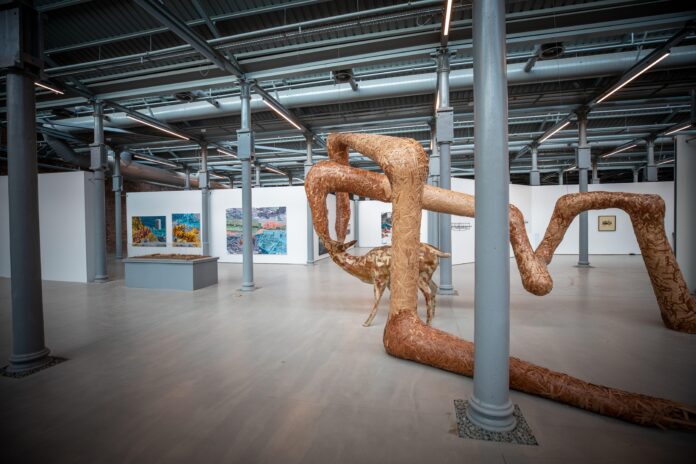Istanbul has a new public art space in a sprawling 19th-century former factory on the banks of the Golden Horn that it hopes will host the prestigious Istanbul Biennial and expand the local government’s support of cultural initiatives.
ArtIstanbul Feshane, spread across 8,000 sq. m, includes galleries, a library, concert space and conference hall in the 190-year-old building, named after the fez cap produced here for Ottoman soldiers. Restored by the Istanbul municipality’s cultural heritage department over four years, the complex will eventually double in size when auxiliary buildings are reconstructed, says Mahir Polat, the deputy secretary general at the municipality.
“A public, contemporary space helps ensure Istanbul will become one of the world’s arts and culture centres,” Polat tells The Art Newspaper. “Feshane was historically linked with the rest of the world as part of the city’s port. Now it symbolises how Istanbul is once again assuming its role, seemingly forgotten, as an intercultural hub.”
In a nod to Venice’s Arsenale, the collection of former shipyards and armouries that hosts the Italian city’s biennial, Polat said converting the industrial space for cultural use was the best way to preserve the historically significant site, where mass-production first began in the Ottoman Empire.

ArtIstanbul Feshane is housed in a 19th-century former factory on the banks of the Golden Horn
Built in 1833 by a modernising sultan to sew Western-style military uniforms, the brick-encased Feshane is one of the world’s earliest examples of steel construction. It functioned as a factory until shortly after the secular Turkish Republic was founded in 1923 and the fez was banned in a bid to promote Western dress. Most recently, the building served as a congress centre. Polat declined to give the final cost of the restoration, but local media reported that the original budget was around $7.5m.
Feshane is part of an ambitious conservation programme by the opposition-controlled municipality that has turned several abandoned sites into public spaces, including a design centre at the art nouveau Casa Botter and a museum at a former gasworks, which was used by the Istanbul Biennial in 2022.
The Biennial, which stages its 18th edition next year, was forced to relocate at the last minute in 2019 after an asbestos scare at a former shipyard on the other side of the Golden Horn, which is now being remade into a $1bn luxury marina and residential development. “The Biennial has repeatedly struggled to find the space it needs in recent years… Of course, they will use Feshane as we support institutions that sustain the city’s cultural life,” Polat said.
Feshane joins a surfeit of mostly private art institutions that have opened in Turkey in recent years, almost all created by wealthy families. In May, Istanbul Modern, established by the foundation of the Eczacıbaşı family, reopened in a stunning Renzo Piano-designed building on the Bosphorus Strait. The institution was Turkey’s first contemporary art museum when it first opened in 2004 in a former customs warehouse, which was knocked down to make way for a cruise ship terminal and shopping development.
Yet this city of 16 million people has few government-funded art venues. “Public institutions have largely failed to fulfil their responsibility in contemporary art, placing the burden on the private sector,” Polat says. This has helped make “art and culture a class issue that is seen as the domain of the elite. We want to fill the gap [with] a space that is non-commercial in a disadvantaged neighbourhood where children from all social segments can discover art.”
In that spirit, entrance to Feshane is free, and its inaugural exhibition, Starting from the Middle, features work by 327 artists, chosen by more than a dozen curators. Among the works are photographs of controversial real-estate projects in historic districts and anti-government protests from 2013. The exhibit “prioritises solidarity for an art community weary of the competitive market,” Polat says. “Public space is not a luxury but a necessity, including for democratic debate.”

























